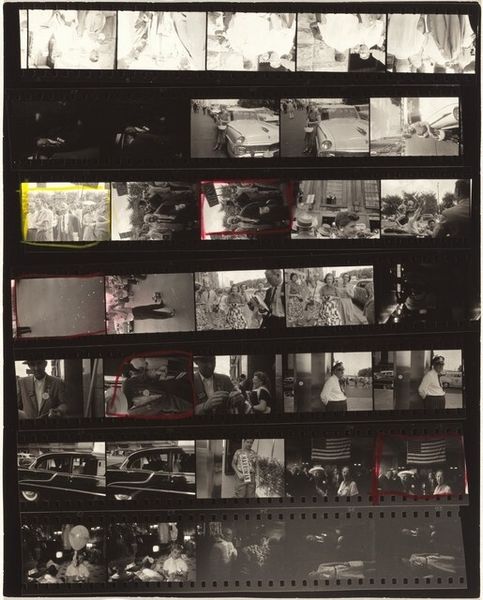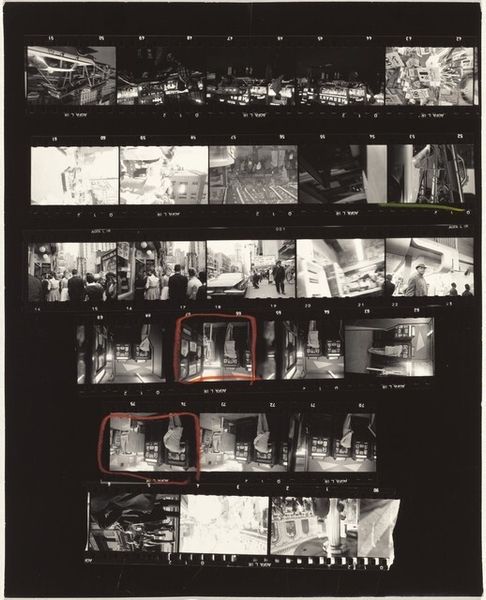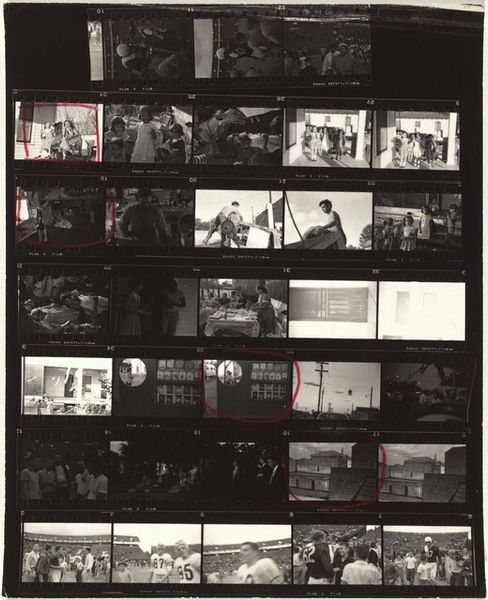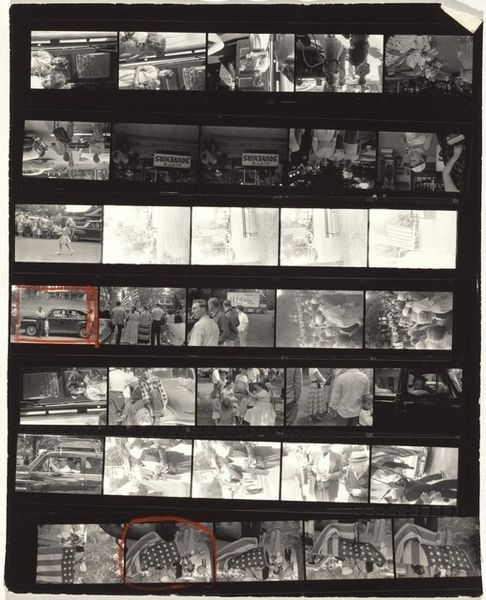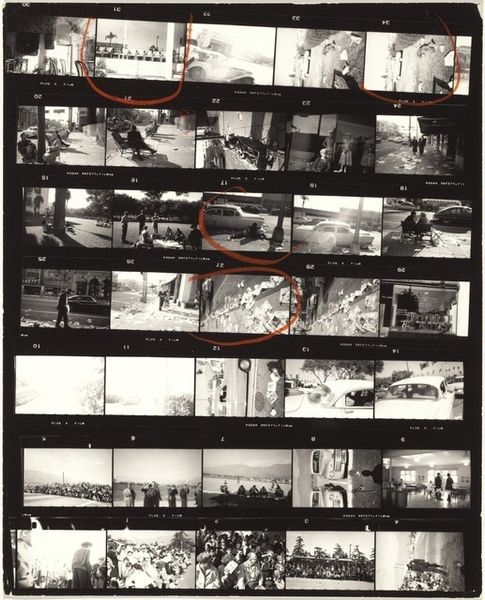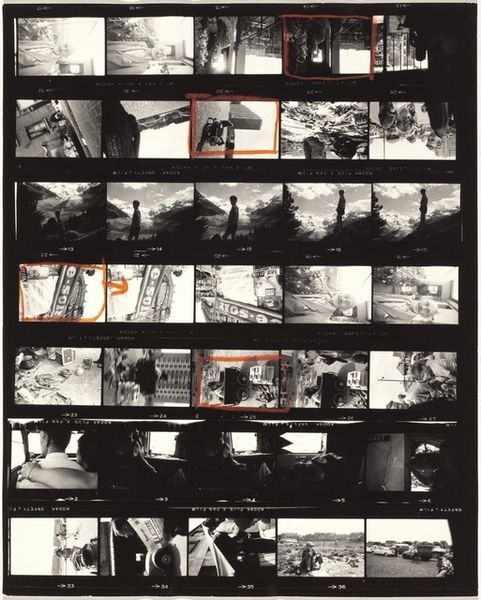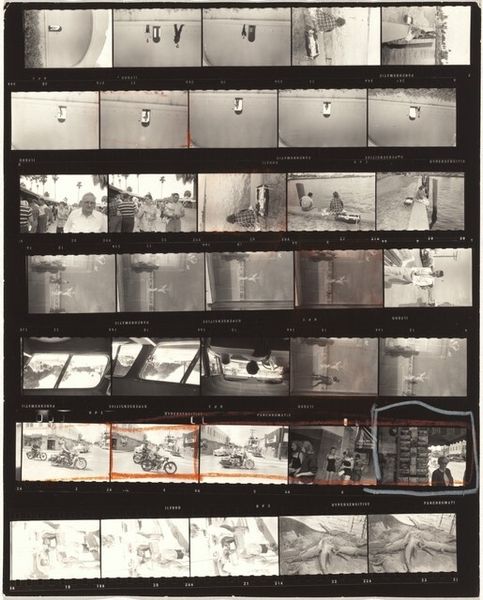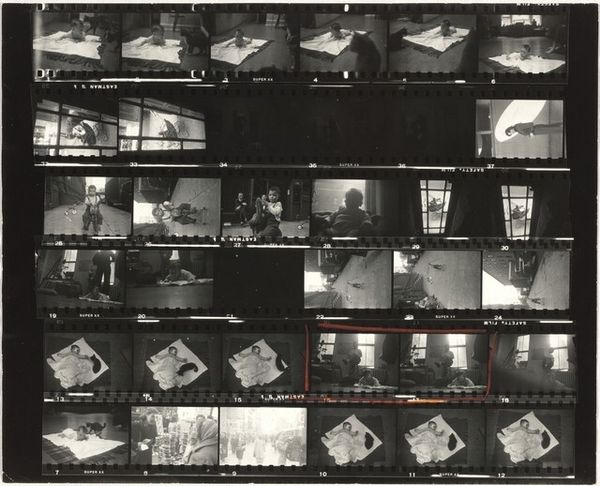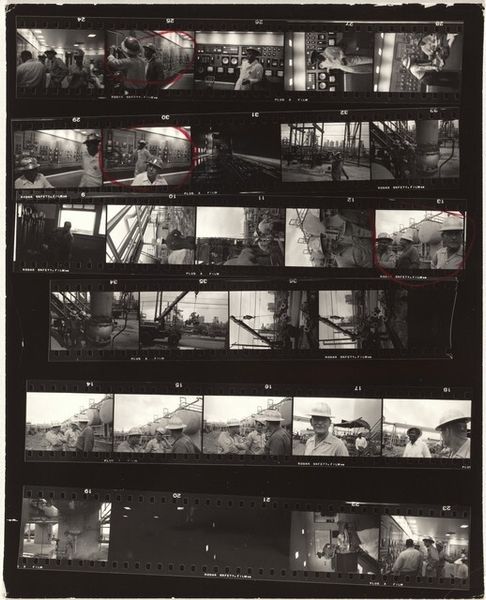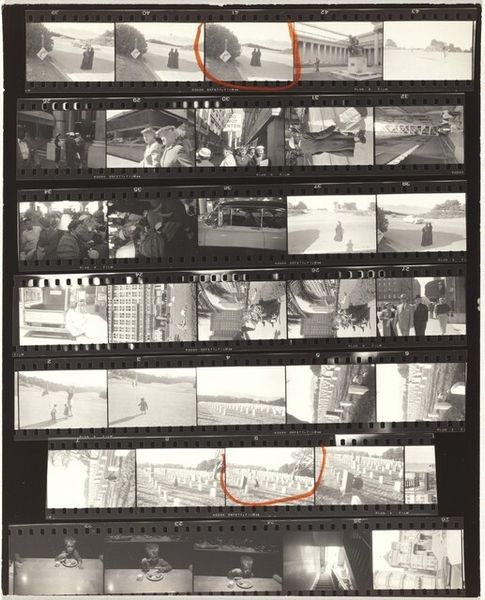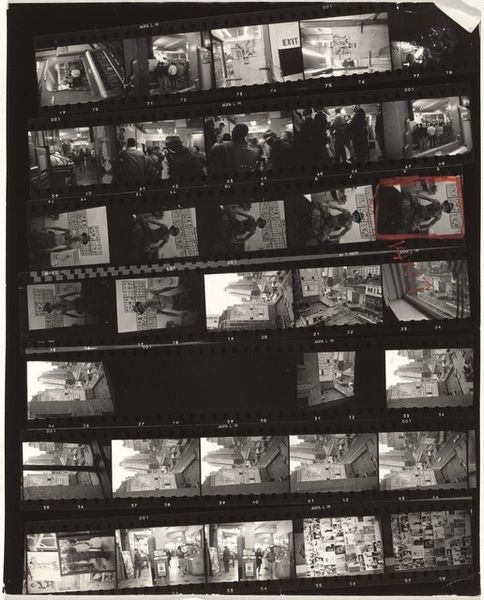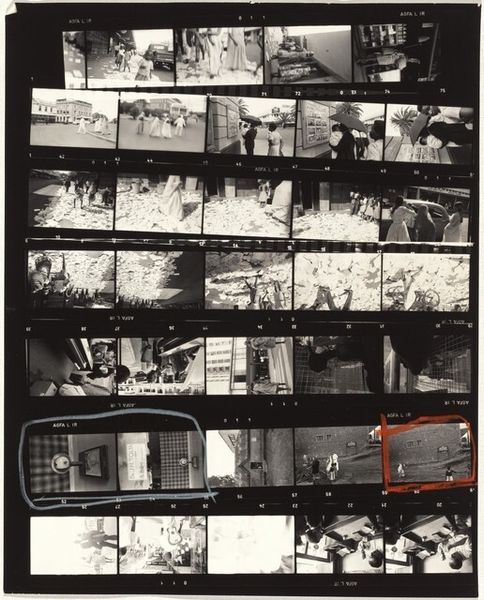
Dimensions: overall: 25.2 x 20.2 cm (9 15/16 x 7 15/16 in.)
Copyright: National Gallery of Art: CC0 1.0
Curator: Let’s spend some time with Robert Frank's "Italy 3," a gelatin-silver print from 1964. What are your first thoughts? Editor: It strikes me as quite raw. It’s the photographic equivalent of exposed brushstrokes, offering a peek behind the scenes. The physicality of the medium, the celluloid strip, and silver are laid bare. Curator: It certainly disrupts any notions of photographic perfection, doesn’t it? What are some of the implications of showcasing this entire uncut roll? It reflects the ethos of Post-Impressionism—foregrounding subjective experience and process, it invites speculation about the artist’s experience of place and about narrative interpretation through a collection of juxtaposed images. Editor: Absolutely. We can delve into how Frank’s method—street photography, specifically—conveys social and historical truths. What choices were made? Was it a need for speed in documenting the moment, given his handheld style? Did the economic circumstances influence that process or its aesthetic? The whole piece reveals the nuts and bolts of image production and suggests a kind of anti-elitist approach to art making. Curator: That connects strongly with the sociopolitical themes Frank often addressed. I am drawn to think more deeply about a single chosen image outlined within that visual, temporal grid—its meaning now amplified by association, context, a critical selection amongst many potential photographic works. And of course, with photography, the material always presents the argument of reproducibility; making the moment accessible or allowing further interpretation and reflection. What do you think about these elements of Frank's process and materials? Editor: The gelatine-silver prints themselves become historical objects, embodying the chemical processes of their time. It reveals the history of the analog materials used and hints at questions of conservation. Also, Frank’s rough edges seem deliberate, disrupting the clean lines, smooth surfaces and careful presentation expected in fine art photography. Curator: Exactly! So, both challenging conventional norms and establishing a new visual language. Editor: Indeed. A lasting impression after examining not just the "what" but the "how" and the "why". Curator: A powerful statement on artmaking, visibility, and cultural memory!
Comments
No comments
Be the first to comment and join the conversation on the ultimate creative platform.
